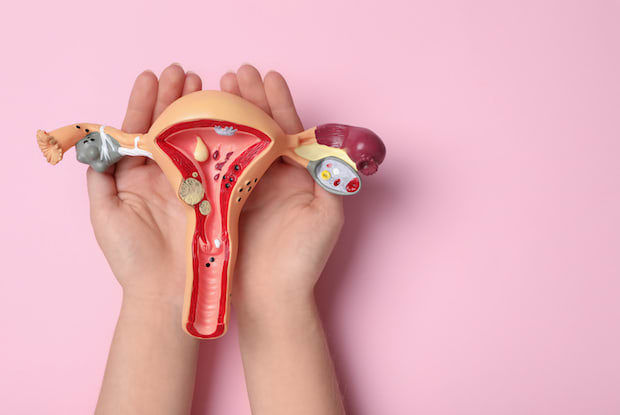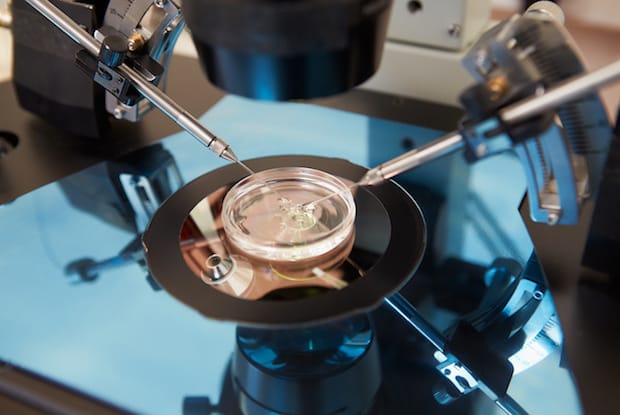Table of Contents
II. What Causes Female Infertility
c. Blocked or Damaged Fallopian Tubes
d. Cervical and Uterine Causes
IV. Treatments and Medications
Overview
a. Female Infertility
Infertility is a big concern for women around the world. You may not be aware of how common it is, as many women do not like to talk about infertility. Twelve percent of women aged 15-44 in the United States have difficulty getting or staying pregnant. [1]
Infertility is the inability to become pregnant after having frequent unprotected sexual intercourse for a year or longer. This is lowered to six months or longer of trying for women who are over 35. Impaired fecundity is a similar condition. Impaired fecundity refers to women who have difficulty getting pregnant or carrying a pregnancy to term.
Only one-third of infertility issues are connected to fertility problems in females. Another third is because of fertility issues in males. The other cases are caused by either a mixture of male and female problems and often, the cause cannot be found.

b. Becoming Pregnant
Becoming pregnant is a complicated process. Many steps need to be completed in order for a woman to become pregnant. Infertility can occur if there is a problem in any or several of the steps. The steps for pregnancy are:
- A woman must release an egg from one of her ovaries. This usually happens at around day 14 of a 28-day menstrual cycle.
- The fertilized egg must go through the fallopian tube towards the uterus. The egg takes between 12-24 hours to pass through the fallopian tube.
- A man's sperm must join with the egg to fertilize it. Millions of sperm cells come out every time that a man ejaculates, but it only takes one sperm cell to make a pregnancy happen. Sperm cells have up to six days to find the egg.
- The fertilized egg must attach itself to the inside of the uterus. It is called implantation when the fertilized egg attaches to the uterus. Implantation usually starts six days after fertilization and can take between three and four days to complete. This is when pregnancy officially begins.
Keep reading to learn the causes of female infertility and the treatments available.
What Causes Female Infertility?
When infertility is because of a problem with the women, it is usually because of a problem producing eggs. [2] However, there are a number of different causes of female infertility.
a. Ovulation Disorders
Ovulation disorders cause women not to ovulate or to ovulate irregularly or infrequently. Common ovulation disorders include: [3]
- Polycystic Ovary Syndrome (PCOS): PCOS is the most common cause of female infertility. This disorder causes a hormone imbalance that affects ovulation.
- Premature Ovarian Failure: This disorder occurs in women under 40 when their ovaries stop functioning properly. This condition often causes infertility.
- Hypothalamic Dysfunction: This disorder can be caused by external factors, including stress or weight changes. Disruption of the pituitary gland hormones can affect ovulation.
b. Endometriosis
Endometriosis is a common condition that affects around 10 percent of women during their reproductive years. [4] It is a condition that involves tissue similar to the inside of the uterus. It occurs when this tissue is found outside the uterus, such as in the ovaries or fallopian tubes. This causes inflammation that can result in scar tissue and can cause fertility problems.
c. Blocked or Damaged Fallopian Tubes
Conception occurs in the fallopian tube. Once an egg is fertilized by sperm, it then moves into the uterus for implantation. Therefore, damaged or blocked fallopian tubes can result in infertility as it can prevent sperm from reaching the egg, or block the fertilized egg from reaching the uterus.

Common causes of blocked tubes include scar tissue, infections and pelvic adhesions. Often blocked fallopian tubes do not cause symptoms, so women may not know that they have blocked tubes until they are trying to become pregnant. [5]
Damaged fallopian tubes may be caused by pelvic inflammatory disease, pelvic tuberculosis or from previous pelvic or abdominal surgery. Pelvic tuberculosis is a major cause of infertility around the world, although it is not common in the United States. [3]
d. Cervical and Uterine Causes
Cervical and uterine problems are another common cause of infertility in women as they can interfere with implantation. Cervical and uterine problems can also increase the likelihood of impaired fecundity. Women with these issues may become pregnant but then suffer a miscarriage.
Damage or problems with the cervix can decrease the chances of becoming pregnant. Common cervical causes include having a narrow cervix caused by genetics or damage, or the cervix not producing sufficient mucus to allow sperm to travel through. [3]
In order for the egg to implant correctly, the inside of the uterus should be free of obstructions and normally shaped. The lining of the uterus also needs to thicken to support a developing egg. [6]
Risk Factors
There are several factors that can affect a woman's ability to become pregnant in addition to medical conditions.
a. Age
Age is the most well-known risk factor for infertility. Age is also a growing cause of fertility problems as many more women are waiting until their 30s and 40s to have children. In the United States of America, around 20 percent of women have their first child after the age of 35. [7] As women get older, they are more likely to have a miscarriage or a health condition that can cause a fertility problem. Aging also affects a woman's eggs. Women over 35 may have a smaller number of eggs left, may be less able to release their eggs and once released, their eggs may be less healthy.
b. Alcohol and Tobacco
Alcohol and tobacco lower the chance of pregnancy when used by either a woman or a man. Infertility rates are twice as high in both male and female smokers. [8] Women who smoke also have a higher risk of miscarriages and irregular pregnancies. [9] Alcohol and tobacco can also cause a low sperm count in men. Guidelines in the United States recommend that couples abstain from alcohol when trying to become pregnant. [10]
c. Diet, Exercise and Weight
Infertility is more likely if a woman does not lead an active lifestyle, is overweight or is underweight. [9] Losing or gaining weight in order to become closer to a healthy weight can increase the chance of getting pregnant and having a healthy baby. [11] Low-calorie or restrictive diets can also decrease the likelihood of pregnancy.
Treatments and Medication
There are many available treatments for female infertility. These depend on the cause of infertility. Treatment is not always required and around 95 percent of couples successfully conceive after two years of trying. [3]
When testing for infertility, doctors may order several tests so that they can attempt to diagnose the cause of infertility. This can include blood tests, tests to examine the uterus lining or to check if the fallopian tubes are blocked. Even after different tests and procedures in both the male and female, doctors may not be able to diagnose the cause. Unexplained infertility where the causes cannot be pinpointed affects around one in five couples with infertility problems. [12]

a. Treatment
Once a doctor has diagnosed a cause of infertility, there are various treatments that can help. The treatments available depend on the cause of infertility, the length of time a couple has been trying, as well as the couple’s ages and personal preference. [13] Some uterine problems, endometriosis and other conditions can be treated with surgery.
Another option is assisted reproductive technology (ART). This includes any fertility treatment where the egg and the sperm are handled. The most common ART technique is IVF (In vitro fertilization). This involves fertilizing eggs with sperm in a lab and then implanting them into the uterus. [13]
Other forms of ART include:
- Donor eggs or sperm - If there are serious problems with the couple's own sperm or eggs, they may choose to use sperm or eggs from a donor.
- Assisted hatching – This involves implanting the embryo into the uterus lining.
- Gestational carrier – This involves placing the couple's fertilized embryo into someone else's uterus.
b. Medications
Depending on the cause of infertility, a doctor may prescribe medication to help. The benefits and risks of each medication should be discussed with a doctor.
If the problem is with ovulation, a doctor may prescribe Clomid. Clomid contains clomiphene and has been used to treat ovulation problems for over 40 years. Around half of the women who take clomiphene are able to get pregnant. [14] Alternatively, a doctor may prescribe letrozole or metformin to treat ovulation problems.
Other common infertility medications include Menopur, which helps the body produce multiple eggs or Lupron Depot, which can reduce pain from endometriosis. If there is too much prolactin in the pituitary gland, a doctor may prescribe Dostinex or Parlodel.
The content in this article is intended for informational purposes only. This website does not provide medical advice. In all circumstances, you should always seek the advice of your physician and/or other qualified health professionals(s) for drug, medical condition, or treatment advice. The content provided on this website is not a substitute for professional medical advice, diagnosis or treatment.
